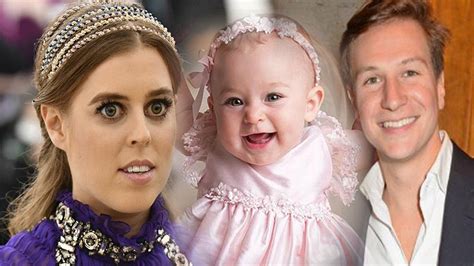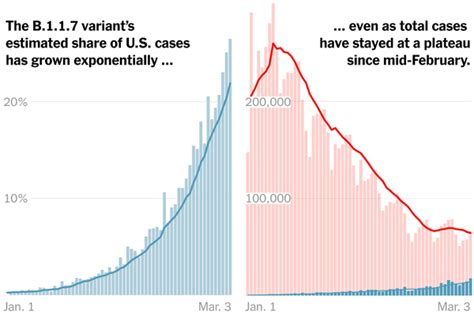
A rumor circulating online claiming Princess Beatrice underwent a DNA test to resolve a family feud has been debunked by fact-checkers. The claim, amplified across social media platforms, falsely suggested a rift within the British royal family, supposedly centered around disputed parentage. However, no credible evidence supports these assertions, and the narrative has been definitively refuted.
The viral rumor gained traction through various online posts and videos, particularly on platforms like Facebook and TikTok, alleging that a DNA test was secretly conducted on Princess Beatrice. The purported reason for this test was to address concerns and doubts about her biological parentage, implying a hidden family conflict. These claims were often accompanied by sensationalized headlines and speculative commentary, contributing to their widespread dissemination.
Several factors contributed to the rapid spread of this misinformation. Firstly, the inherent allure of royal family drama makes such stories highly clickable and shareable. Secondly, the lack of official statements addressing the rumor directly allowed it to fester and gain credibility in the absence of reliable information. Finally, the use of emotionally charged language and suggestive imagery in the online posts further amplified their impact.
Several media outlets and fact-checking organizations have investigated the claim and found it to be entirely baseless. There are no credible reports or official statements confirming that Princess Beatrice has undergone a DNA test or that any family feud exists regarding her parentage.
According to a fact-check by USA Today, “no credible news outlets have reported on this alleged DNA test.” The article further clarifies that the claim is “baseless” and lacks any supporting evidence. The spread of this false narrative underscores the challenges of combating misinformation in the digital age, where unsubstantiated rumors can quickly gain viral traction.
The spread of misinformation, especially concerning public figures, can have several negative consequences. It can damage reputations, erode trust in institutions, and contribute to a climate of suspicion and division. In this particular case, the false rumor about Princess Beatrice could potentially harm her public image and create unnecessary tension within the royal family.
The debunking of this rumor serves as a reminder of the importance of critical thinking and media literacy in the digital age. It is crucial to verify information from multiple sources before sharing it online, especially when it involves sensitive topics or public figures. Fact-checking organizations play a vital role in combating misinformation by providing accurate and reliable information to the public.
To prevent the spread of similar rumors in the future, it is essential to promote media literacy education, encourage responsible social media usage, and hold individuals and platforms accountable for spreading false information. Additionally, public figures and institutions should be proactive in addressing false rumors and providing accurate information to the public.
The case of Princess Beatrice’s DNA test rumor highlights the power of misinformation to spread rapidly and the importance of fact-checking in combating its harmful effects. By staying informed, verifying information, and promoting media literacy, we can all contribute to a more informed and trustworthy online environment.
In-Depth Analysis:
The proliferation of this rumor underscores the complex dynamics of modern media consumption, where sensationalism often trumps accuracy. The digital landscape, characterized by its rapid dissemination of information, provides fertile ground for unsubstantiated claims to flourish. The allure of royal intrigue, combined with the relative ease of creating and sharing content online, creates a perfect storm for misinformation to spread.
The Role of Social Media Algorithms:
Social media algorithms play a significant role in amplifying these types of rumors. These algorithms are designed to prioritize engagement, meaning that content that generates strong emotional reactions – whether positive or negative – is more likely to be shown to a wider audience. This can lead to a situation where false or misleading information spreads rapidly, regardless of its factual accuracy.
The Impact on Public Trust:
The spread of misinformation can erode public trust in institutions, including the media and the royal family. When people are constantly bombarded with false or misleading information, they may become more cynical and less likely to trust traditional sources of authority. This can have serious consequences for society, as it can undermine democratic processes and make it more difficult to address important issues.
The Importance of Media Literacy:
Media literacy is the ability to critically evaluate information from various sources and to distinguish between fact and fiction. It is an essential skill in the digital age, as it enables individuals to navigate the complex information landscape and make informed decisions. Media literacy education should be a priority for schools and communities, as it can help to prevent the spread of misinformation and promote a more informed and engaged citizenry.
The Responsibility of Social Media Platforms:
Social media platforms have a responsibility to combat the spread of misinformation on their platforms. This includes implementing measures to detect and remove false or misleading content, as well as promoting media literacy education among their users. While platforms have made some progress in this area, more work needs to be done to ensure that their platforms are not used to spread harmful disinformation.
The Royal Family’s Response:
The royal family has generally adopted a strategy of not commenting on rumors and speculation. This approach is based on the belief that responding to every false claim would only serve to amplify it and give it more credibility. However, there may be situations where it is necessary for the royal family to address misinformation directly, particularly when it is causing significant harm or has the potential to damage their reputation.
The Broader Context of Royal Family Rumors:
Rumors and speculation about the royal family have been a feature of British public life for centuries. The intense public interest in the royal family, combined with their relative privacy, creates a fertile ground for gossip and speculation. While some of these rumors are harmless, others can be damaging and can have a negative impact on the individuals involved.
The Psychological Impact of Misinformation:
The psychological impact of misinformation can be significant. Exposure to false or misleading information can lead to anxiety, stress, and even depression. It can also erode trust in social institutions and make people more cynical about the world around them. This is particularly true for vulnerable populations, such as children and the elderly, who may be more susceptible to the effects of misinformation.
The Future of Misinformation:
The challenge of combating misinformation is likely to become even more complex in the future, as technology continues to evolve. The development of artificial intelligence (AI) has made it easier to create and disseminate fake news and other forms of disinformation. This means that it will be even more important to promote media literacy and to develop new tools and strategies for detecting and combating misinformation.
The Role of Journalism:
Journalism plays a crucial role in combating misinformation by providing accurate and reliable information to the public. Journalists have a responsibility to verify the information they report and to present it in a fair and unbiased manner. They also have a responsibility to expose and debunk false rumors and to hold individuals and institutions accountable for spreading disinformation.
The Ethics of Reporting on Rumors:
Reporting on rumors can be ethically challenging, as it is important to avoid amplifying false information. Journalists should only report on rumors when they are of significant public interest and when they have been able to verify the information from multiple sources. They should also be careful to present the information in a balanced and objective manner, avoiding sensationalism and speculation.
The Importance of Transparency:
Transparency is essential for building trust in the media and in public institutions. When journalists and public officials are transparent about their sources and their methods, it makes it more difficult for them to spread misinformation. Transparency also allows the public to hold them accountable for their actions.
The Need for Collaboration:
Combating misinformation requires collaboration among various stakeholders, including journalists, social media platforms, educators, and policymakers. By working together, these stakeholders can develop more effective strategies for preventing the spread of misinformation and promoting a more informed and trustworthy online environment.
The Long-Term Consequences of Misinformation:
The long-term consequences of misinformation can be significant. It can erode public trust, undermine democratic processes, and lead to social unrest. It is therefore essential to take steps to combat misinformation and to promote a more informed and engaged citizenry.
Conclusion:
The Princess Beatrice DNA test rumor serves as a cautionary tale about the dangers of misinformation in the digital age. By staying informed, verifying information, and promoting media literacy, we can all contribute to a more informed and trustworthy online environment. The debunking of this rumor underscores the importance of critical thinking and the role of fact-checking organizations in combating the spread of false information. Furthermore, it emphasizes the need for social media platforms to take responsibility for the content shared on their platforms and for individuals to be mindful of the information they consume and share. The episode also highlights the enduring fascination with the British royal family and the challenges of managing their public image in an era of instant communication and viral rumors.
Frequently Asked Questions (FAQ):
Q1: What was the rumor about Princess Beatrice and a DNA test?
A1: The rumor claimed that Princess Beatrice underwent a DNA test to resolve a family feud related to questions about her biological parentage. This claim was widely circulated on social media platforms like Facebook and TikTok.
Q2: Is there any truth to the rumor about the DNA test?
A2: No, the rumor is entirely false. Fact-checking organizations and credible news outlets have debunked the claim, stating that there is no evidence to support it. USA Today specifically stated that “no credible news outlets have reported on this alleged DNA test,” and called the claim “baseless.”
Q3: Where did the rumor originate?
A3: The exact origin of the rumor is unclear, but it gained traction through various online posts and videos on social media platforms. These posts often used sensationalized headlines and speculative commentary to attract attention.
Q4: Why did the rumor spread so quickly?
A4: Several factors contributed to the rapid spread of the rumor, including the inherent public interest in royal family drama, the lack of official statements initially addressing the claim, and the use of emotionally charged language and imagery in the online posts. Social media algorithms also played a role in amplifying the reach of the rumor.
Q5: What can be done to prevent similar rumors from spreading in the future?
A5: To prevent the spread of similar rumors, it’s crucial to promote media literacy education, encourage responsible social media usage, and hold individuals and platforms accountable for spreading false information. Additionally, public figures and institutions should be proactive in addressing false rumors and providing accurate information to the public. Verifying information from multiple credible sources before sharing it online is also essential.
Expanding the Context with Historical Royal Rumors and Their Impact:
The rumor surrounding Princess Beatrice’s DNA test is not an isolated incident. Throughout history, the British royal family has been the subject of numerous rumors, scandals, and conspiracy theories. These rumors have often been fueled by public fascination with the monarchy, the desire for sensational stories, and the inherent opacity of royal life. Understanding the historical context of these rumors can provide valuable insights into the dynamics at play in the Princess Beatrice case.
One of the most enduring and damaging royal rumors involved Princess Diana and her tumultuous marriage to Prince Charles. The intense media scrutiny surrounding their relationship, combined with the couple’s personal struggles, created a fertile ground for speculation and gossip. Rumors about infidelity, mental health issues, and even conspiracies surrounding Diana’s death continue to circulate decades after her passing. These rumors had a significant impact on public opinion of the royal family, eroding trust and fueling criticism of the monarchy.
Another notable example is the rumor surrounding the birth of Prince Charles himself. Some conspiracy theorists have claimed that Charles was not the biological son of Queen Elizabeth II, but rather the product of an affair or a surrogate pregnancy. These claims, although widely debunked, continue to surface online and in certain fringe media outlets.
In more recent times, rumors surrounding Meghan Markle, the Duchess of Sussex, have been rampant. These rumors have often been tinged with racism and sexism, and have contributed to a toxic online environment that ultimately led to Meghan and Prince Harry’s decision to step down as senior members of the royal family. The Meghan Markle case highlights the dangers of unchecked online rumors and the potential for misinformation to cause real harm.
These historical examples demonstrate that the rumor surrounding Princess Beatrice’s DNA test is part of a larger pattern of misinformation and speculation surrounding the British royal family. The factors that contribute to the spread of these rumors – public fascination, media sensationalism, and online echo chambers – are not new, but they have been amplified by the digital age.
Examining the Legal and Ethical Implications of Spreading Misinformation:
The spread of misinformation, including rumors about public figures like Princess Beatrice, raises important legal and ethical questions. While freedom of speech is a fundamental right in many countries, it is not absolute. There are legal limits on speech that is defamatory, libelous, or incites violence. Spreading false and damaging rumors about someone can potentially lead to legal action for defamation.
Defamation is a legal term that refers to the act of harming someone’s reputation through false statements. In order to prove defamation, a plaintiff must demonstrate that the defendant made a false statement of fact, that the statement was published to a third party, and that the statement caused damage to the plaintiff’s reputation. Proving defamation can be challenging, particularly for public figures like Princess Beatrice, who are subject to a higher standard of proof.
Even if a statement does not meet the legal threshold for defamation, it can still be unethical to spread false rumors about someone. Journalists and social media users have a moral obligation to verify the information they share and to avoid spreading rumors that could harm someone’s reputation or well-being. The principles of responsible journalism include accuracy, fairness, and objectivity. These principles require journalists to avoid publishing unverified information and to present information in a balanced and unbiased manner.
The ethical considerations surrounding the spread of misinformation are particularly important in the context of social media. Social media platforms have become powerful tools for disseminating information, but they also have the potential to amplify the spread of false rumors and hate speech. Social media companies have a responsibility to take steps to combat misinformation on their platforms, including implementing fact-checking measures, removing false content, and promoting media literacy education.
The Impact on Princess Beatrice’s Personal Life and Public Image:
While the rumor about Princess Beatrice’s DNA test has been debunked, it is important to consider the potential impact of such rumors on her personal life and public image. Even false rumors can cause distress and anxiety for the individuals involved and their families. The constant media scrutiny that comes with being a member of the royal family can be particularly challenging, as it can make it difficult to maintain a sense of privacy and normalcy.
Public image is also crucial for members of the royal family, as it can affect their ability to carry out their duties and maintain public support for the monarchy. False rumors and scandals can damage a royal’s reputation and make it more difficult for them to connect with the public. In the case of Princess Beatrice, the DNA test rumor could potentially harm her credibility and make it more difficult for her to engage in charitable work and other public activities.
The royal family has a long history of managing its public image, often through carefully crafted media strategies and public relations efforts. However, the rise of social media and the 24-hour news cycle have made it more difficult for the royal family to control the narrative surrounding their lives. In this environment, it is essential for the royal family to be proactive in addressing false rumors and promoting accurate information.
The Role of Public Relations and Crisis Management:
Public relations and crisis management play a crucial role in protecting the reputations of public figures, including members of the royal family. When false rumors or scandals emerge, it is important for the individuals involved to respond quickly and effectively. A well-crafted public relations strategy can help to mitigate the damage caused by misinformation and to restore public trust.
In the case of the Princess Beatrice DNA test rumor, the lack of an immediate official response may have contributed to its spread. While the royal family often adopts a strategy of not commenting on rumors, there may be situations where a more proactive approach is necessary. A timely and accurate statement from the royal family or its representatives could have helped to stem the tide of misinformation and prevent the rumor from gaining further traction.
Crisis management involves developing a plan for responding to unexpected events that could damage an organization’s reputation. This plan should include procedures for gathering information, assessing the potential impact of the event, and communicating with stakeholders. A well-prepared crisis management plan can help an organization to navigate challenging situations and to minimize the damage to its reputation.
The Future of Royal Rumors in the Digital Age:
The digital age has created both opportunities and challenges for the British royal family. On the one hand, social media and online platforms allow the royal family to connect with the public in new and innovative ways. On the other hand, these same platforms can be used to spread misinformation and to amplify criticism of the monarchy.
The challenge for the royal family is to adapt to the changing media landscape while maintaining its traditions and values. This requires a delicate balance between transparency and privacy, and between engaging with the public and protecting its reputation. The royal family must also be proactive in combating misinformation and in promoting accurate information about its activities and its members.
In the future, it is likely that royal rumors will continue to circulate online. The best way to combat these rumors is to promote media literacy, to encourage responsible social media usage, and to hold individuals and platforms accountable for spreading false information. The royal family can also play a role by being transparent about its activities and by engaging with the public in a meaningful way. By working together, we can create a more informed and trustworthy online environment, where false rumors are less likely to take hold.
Analyzing the Psychological Factors Behind Believing and Spreading Rumors:
Understanding why people believe and spread rumors, even when they are demonstrably false, is crucial for combating misinformation. Several psychological factors contribute to this phenomenon:
-
Confirmation Bias: People tend to seek out and interpret information that confirms their existing beliefs and biases. If someone already holds negative views about the royal family, they may be more likely to believe and spread rumors that support those views.
-
Emotional Contagion: Emotions can spread rapidly through social networks. Rumors that evoke strong emotions, such as outrage or fear, are more likely to be shared, even if they are not true.
-
Social Identity: People often identify strongly with certain groups or communities. Sharing rumors that align with the values and beliefs of their group can strengthen their social identity and sense of belonging.
-
Information Overload: In the face of overwhelming amounts of information, people may rely on heuristics, or mental shortcuts, to make decisions. Rumors can provide a simplified explanation for complex events, making them appealing in a world of information overload.
-
Lack of Critical Thinking Skills: Many people lack the critical thinking skills necessary to evaluate the credibility of information sources and to distinguish between fact and fiction. This makes them more susceptible to believing and spreading rumors.
By understanding these psychological factors, we can develop more effective strategies for combating misinformation. This includes promoting critical thinking skills, encouraging people to question their own biases, and providing access to reliable information sources.
The Evolving Landscape of Fact-Checking and Verification:
The Princess Beatrice DNA test rumor underscores the critical role of fact-checking organizations in combating misinformation. These organizations play a vital role in verifying the accuracy of information and in debunking false rumors. However, the landscape of fact-checking is constantly evolving in response to the changing media environment.
New technologies, such as artificial intelligence (AI), are being used to automate the fact-checking process and to identify potential sources of misinformation. These technologies can help fact-checkers to work more efficiently and to reach a wider audience. However, AI-powered fact-checking is not without its challenges. It is important to ensure that these technologies are used responsibly and that they do not perpetuate biases or errors.
The rise of deepfakes, or manipulated videos and images, also poses a significant challenge for fact-checkers. Deepfakes can be incredibly realistic and can be used to spread misinformation and to damage reputations. Fact-checkers must develop new techniques for detecting deepfakes and for alerting the public to their existence.
Collaboration among fact-checking organizations, journalists, and social media platforms is essential for combating misinformation effectively. By working together, these stakeholders can develop more comprehensive strategies for verifying information and for preventing the spread of false rumors.
Final Remarks on Trust, Responsibility, and Vigilance:
The Princess Beatrice DNA test rumor serves as a stark reminder of the importance of trust, responsibility, and vigilance in the digital age. We must be able to trust the information sources we rely on, but we must also be responsible consumers of information, verifying what we read and share. We must remain vigilant in the face of misinformation and be prepared to challenge false rumors whenever we encounter them.
The spread of misinformation is a complex problem with no easy solutions. However, by working together, we can create a more informed and trustworthy online environment. This requires a commitment from individuals, organizations, and governments to promote media literacy, to combat misinformation, and to protect the integrity of information. The health of our democracy and the well-being of our society depend on it.









